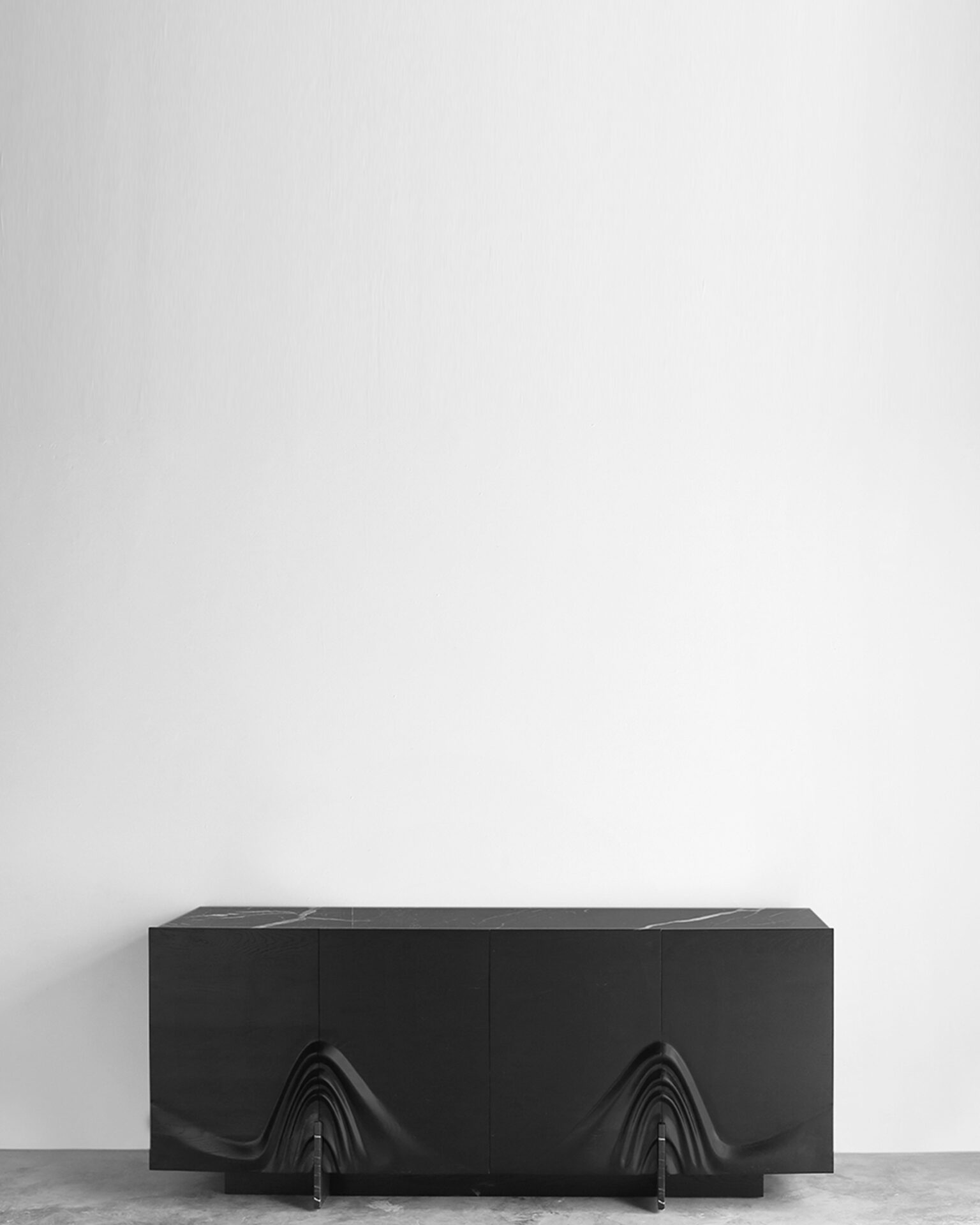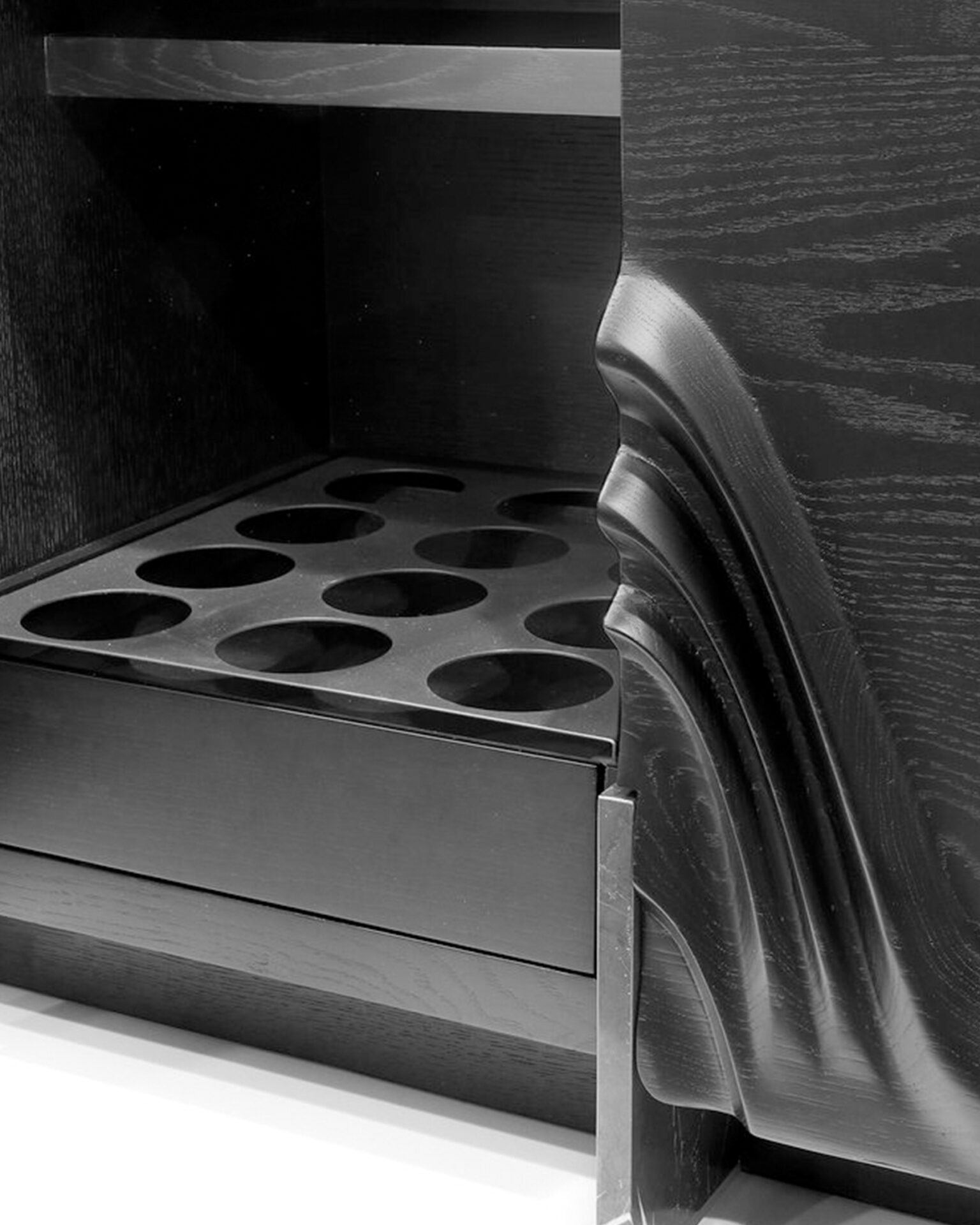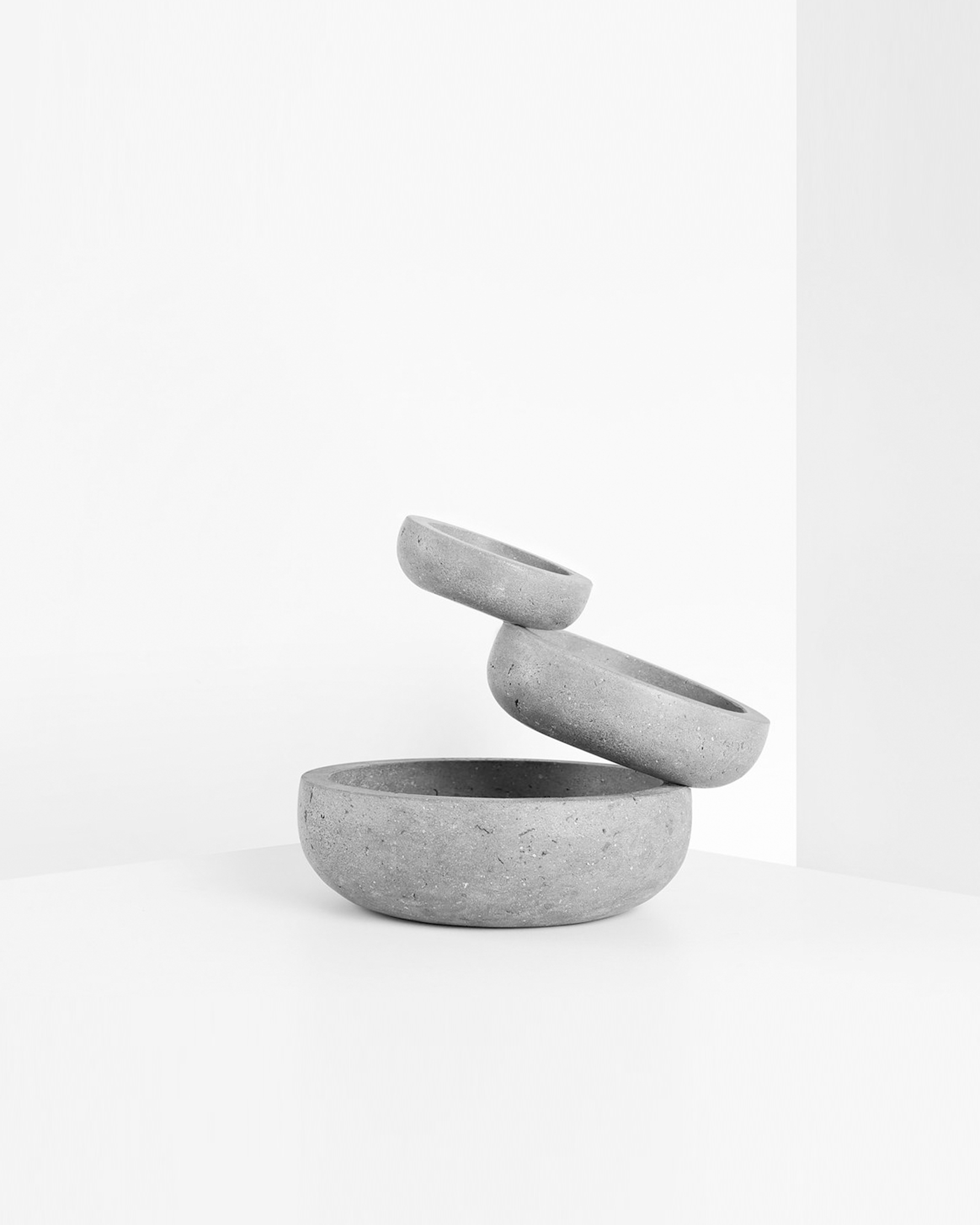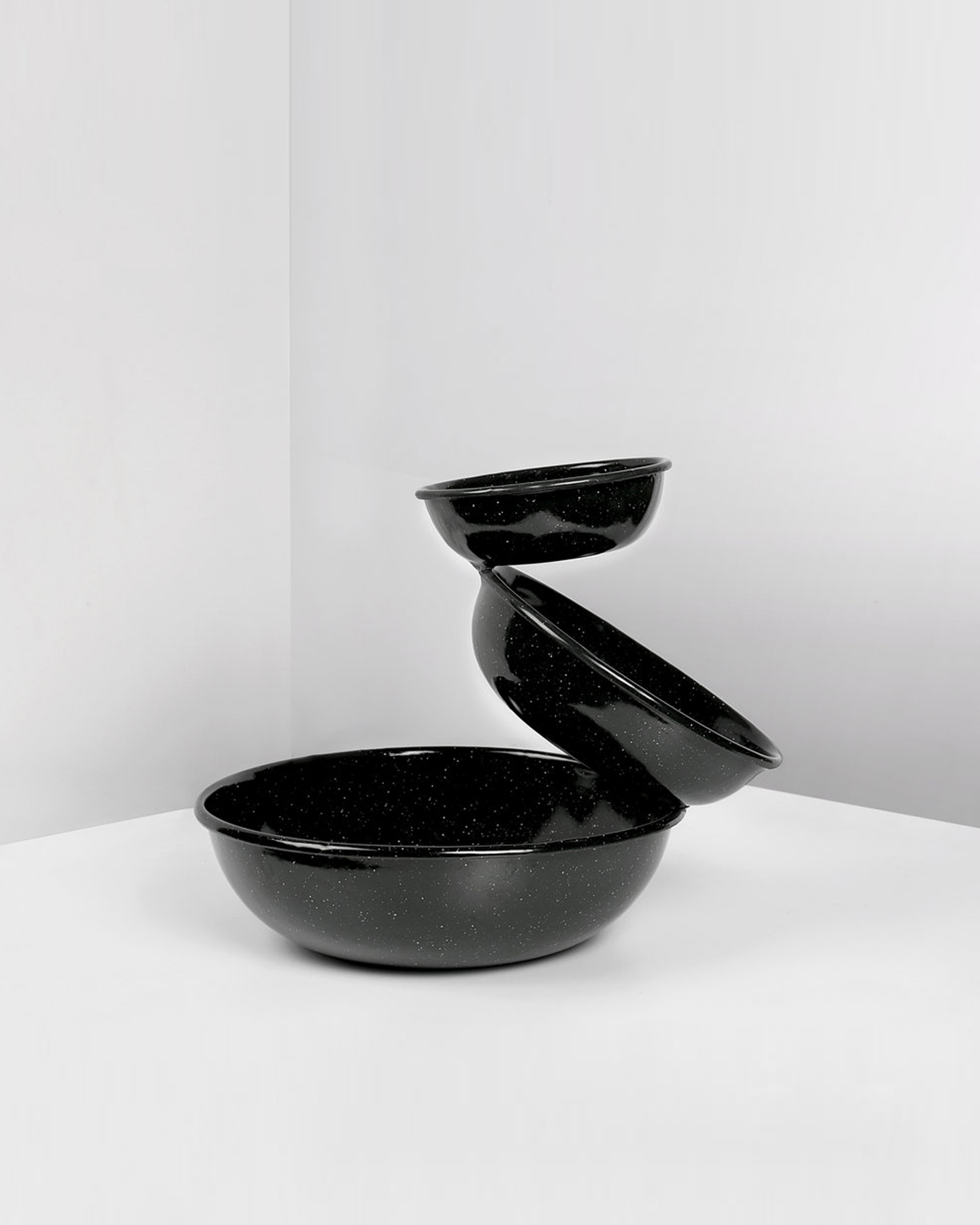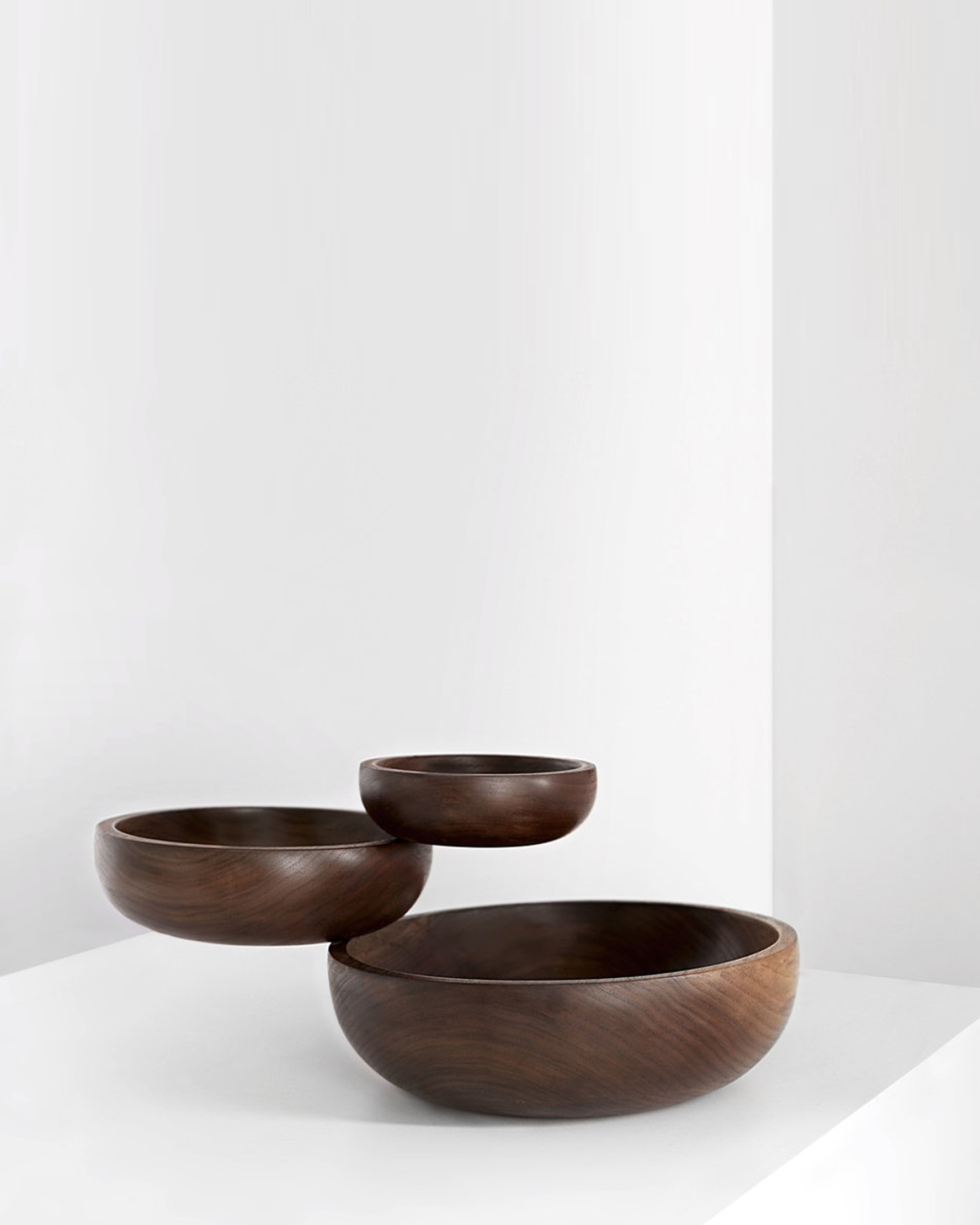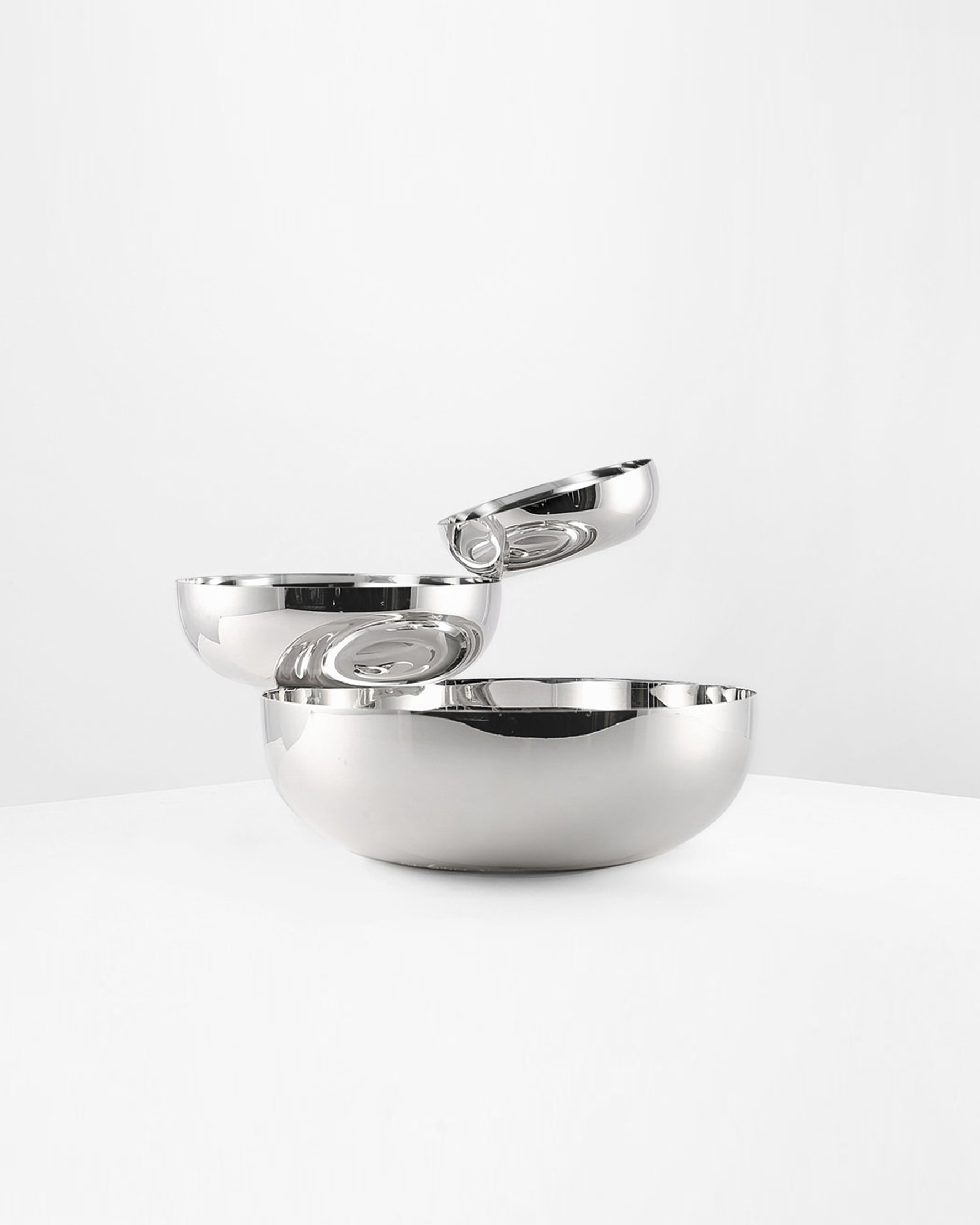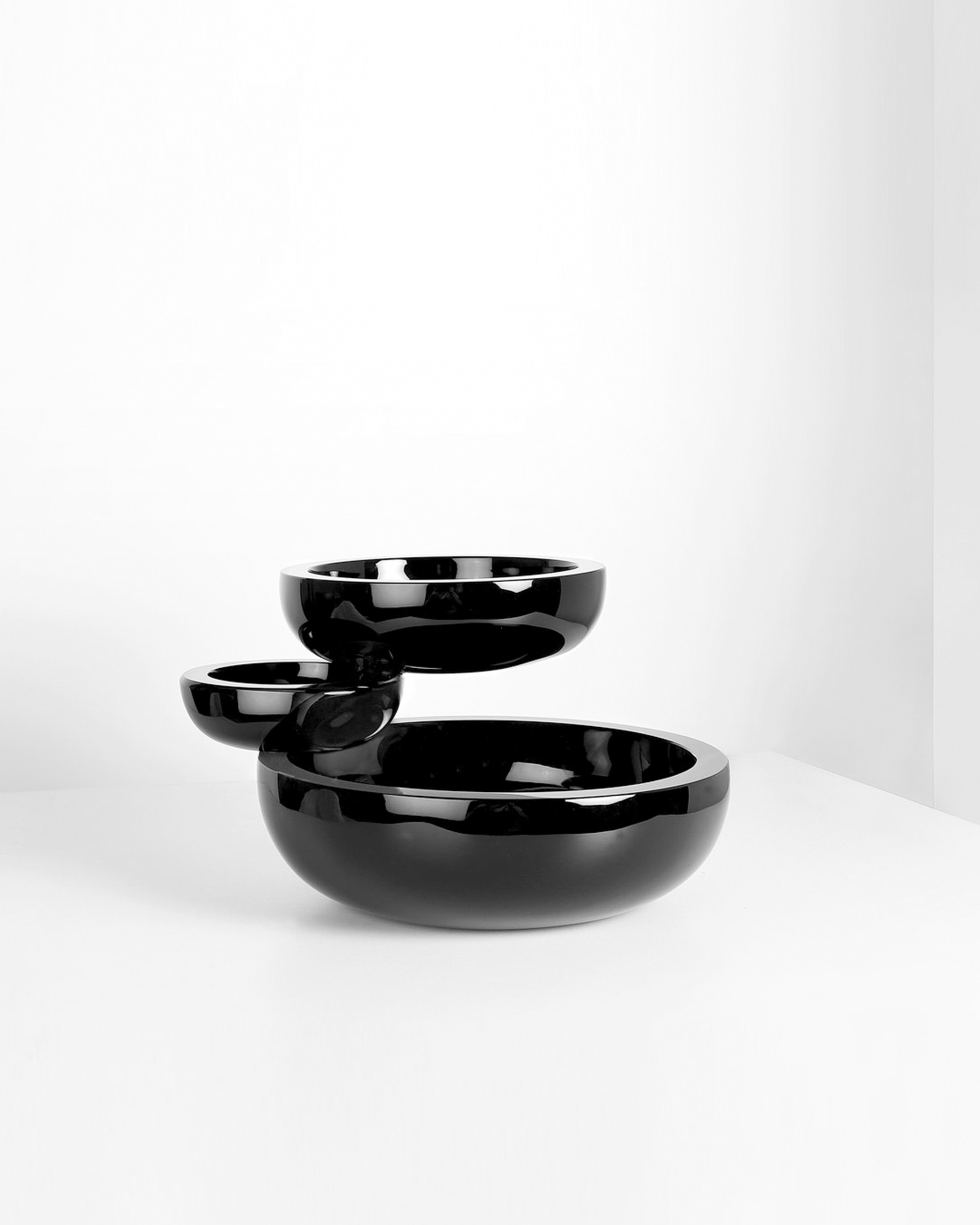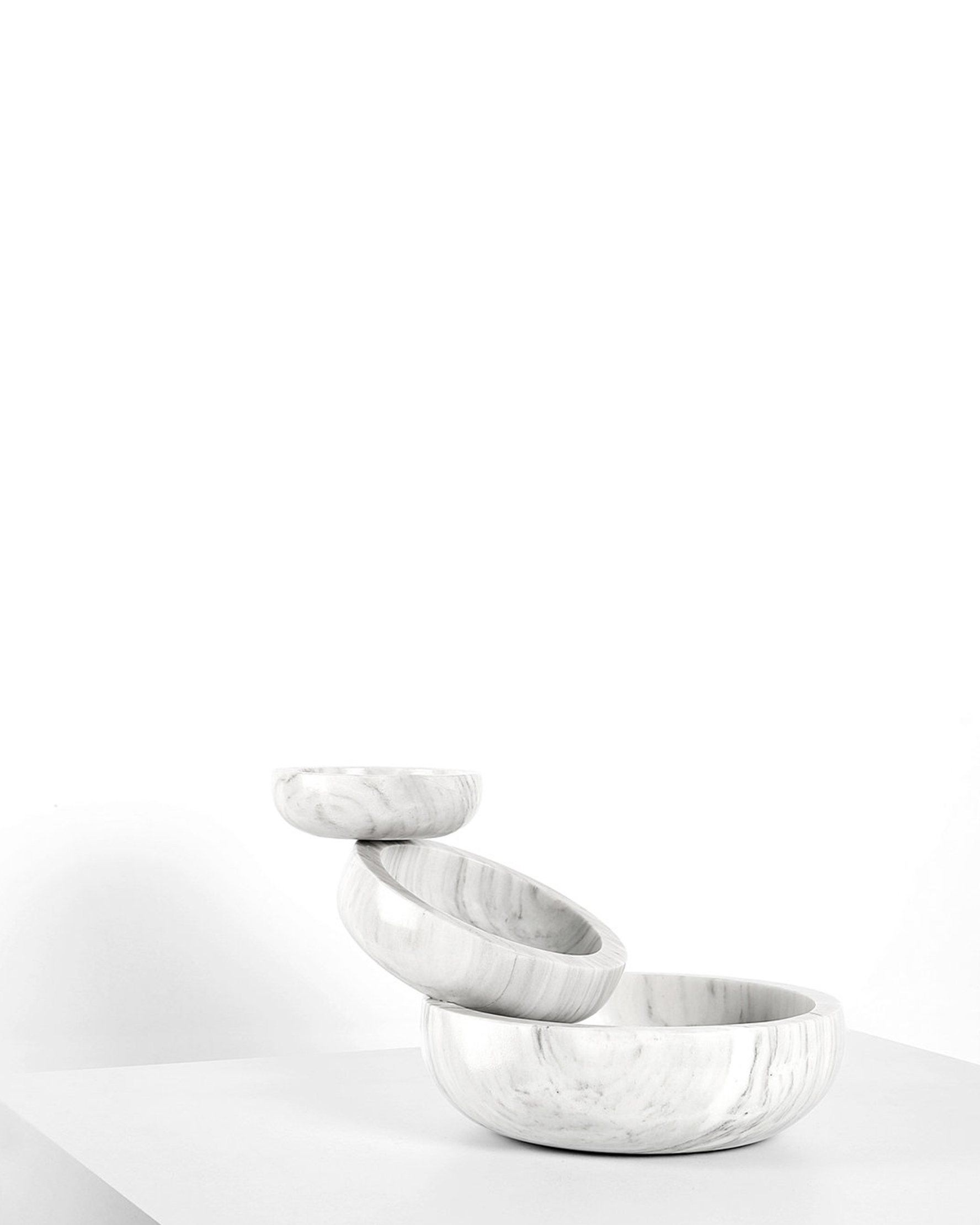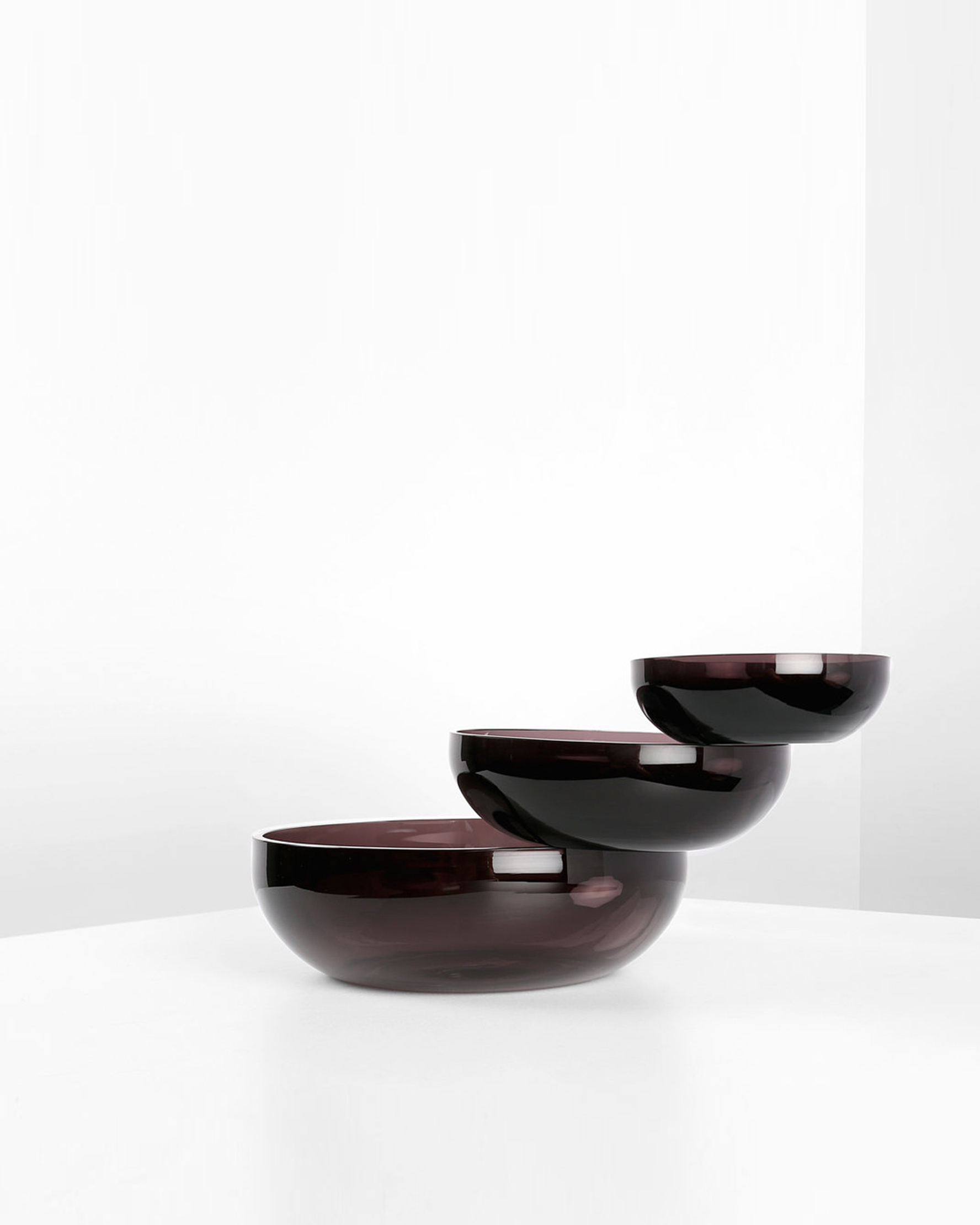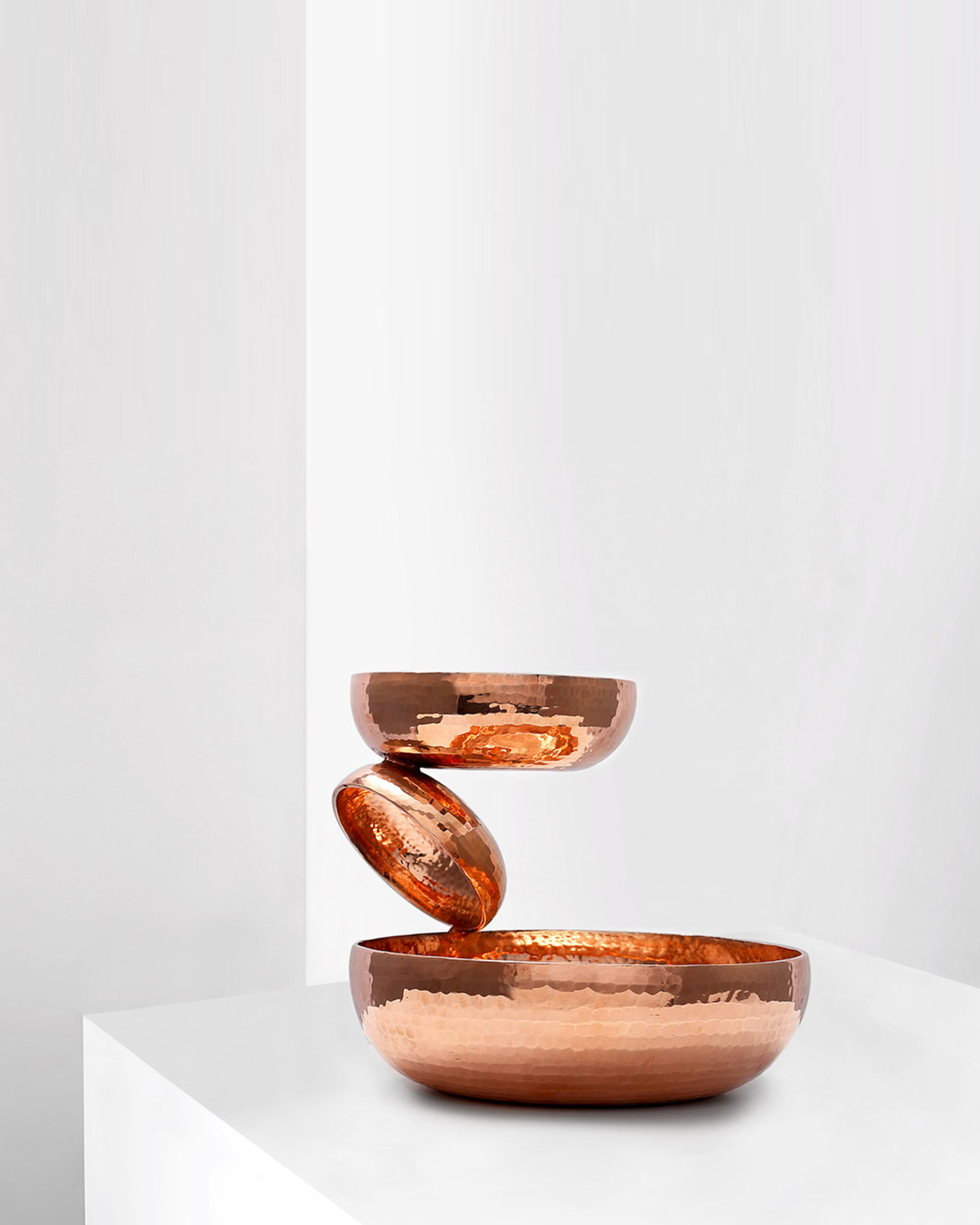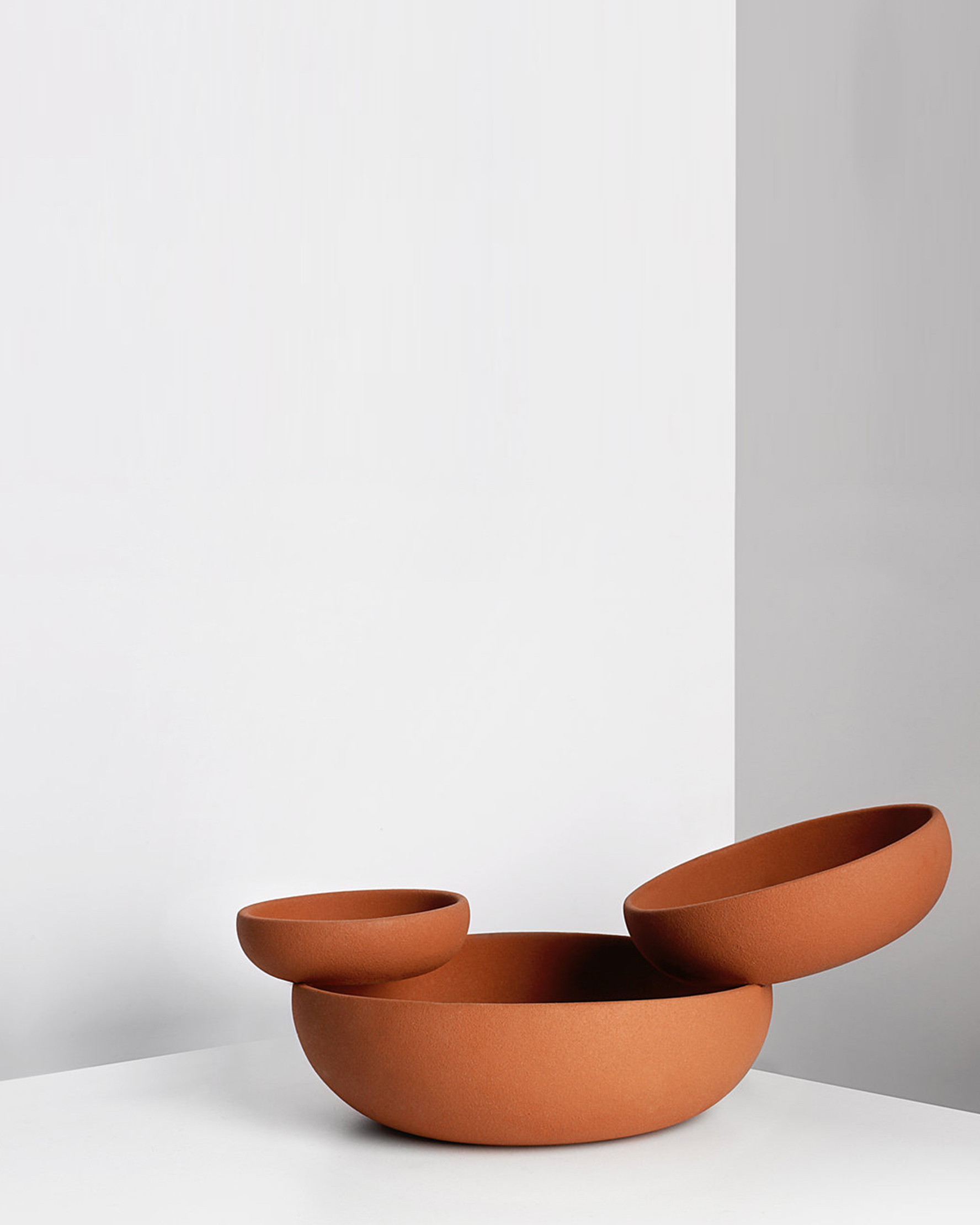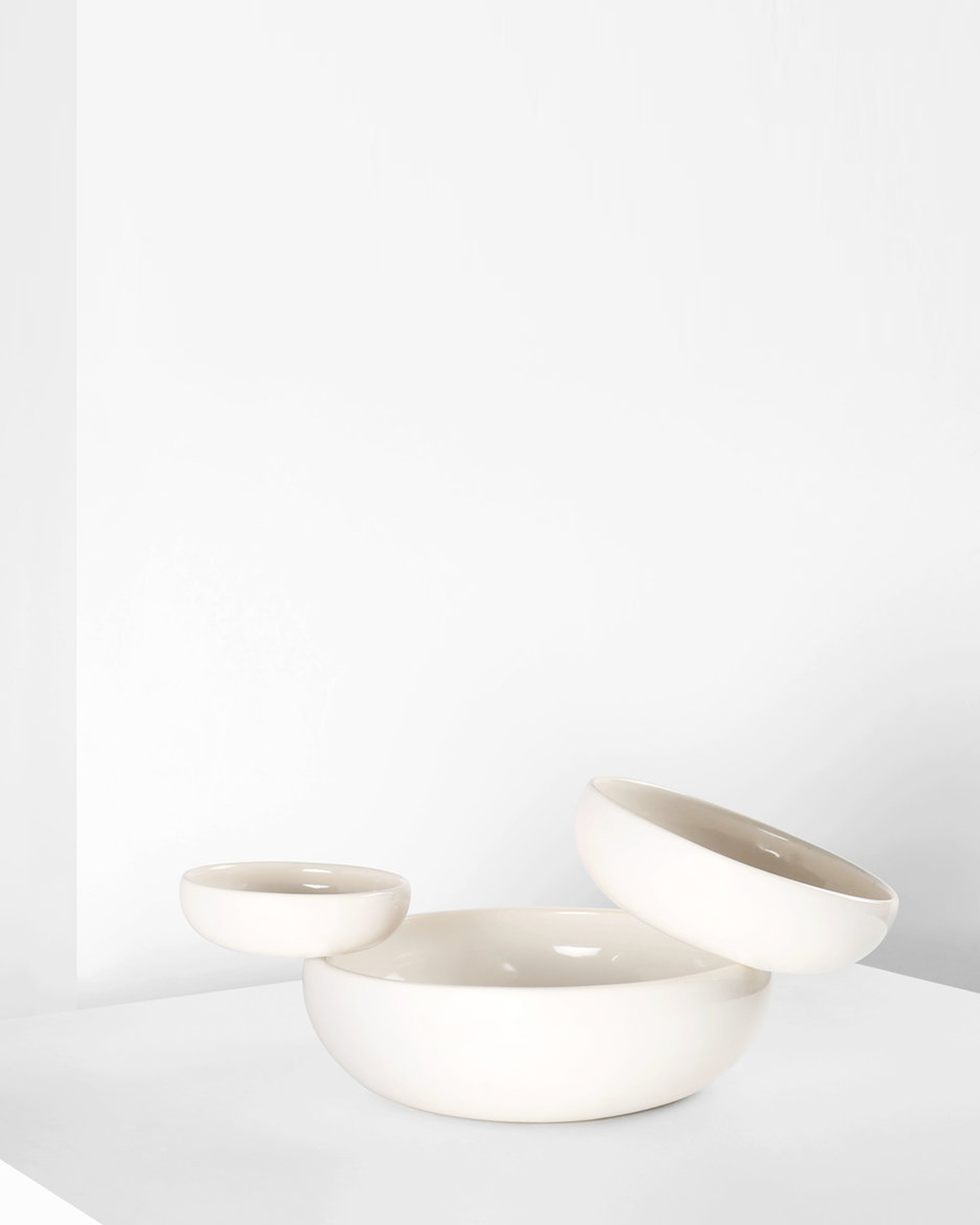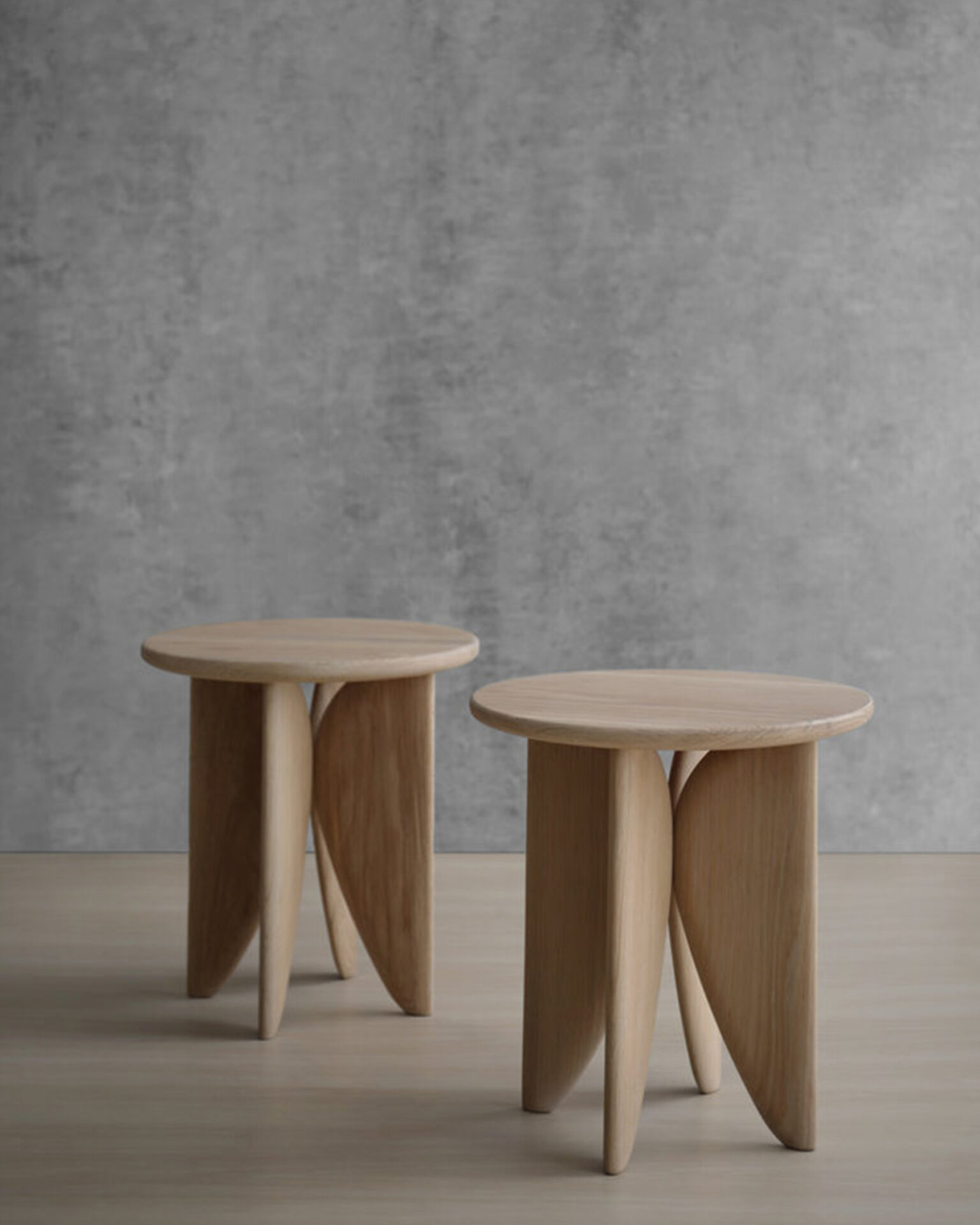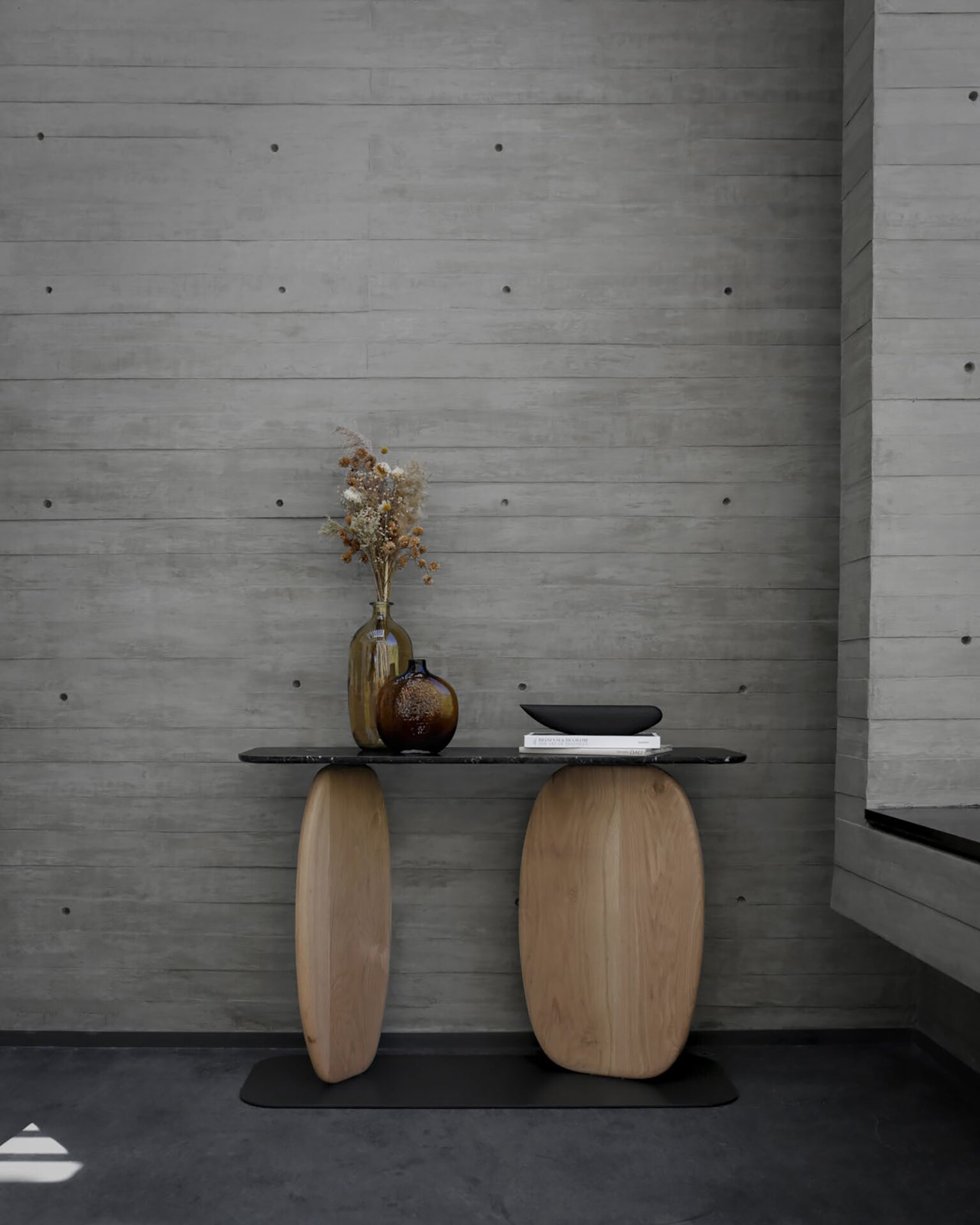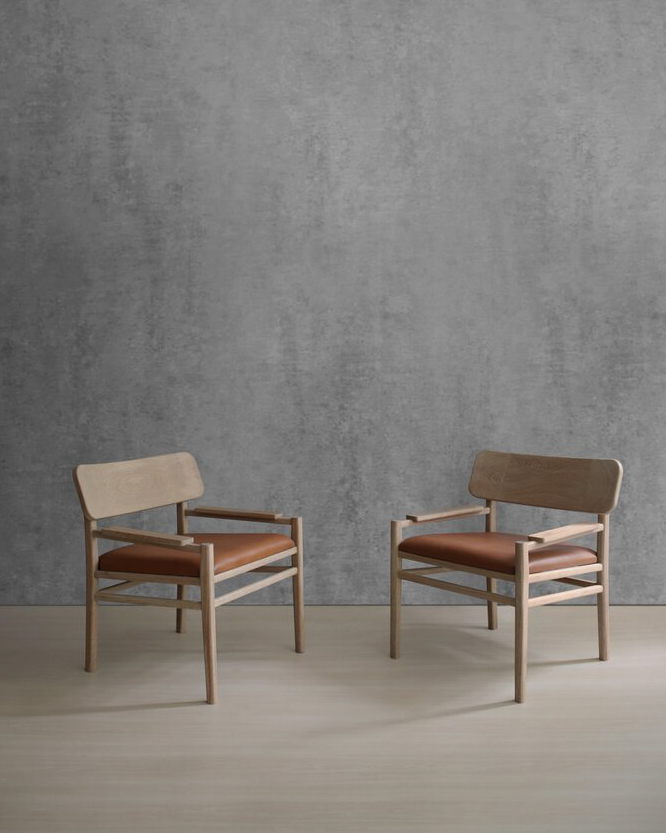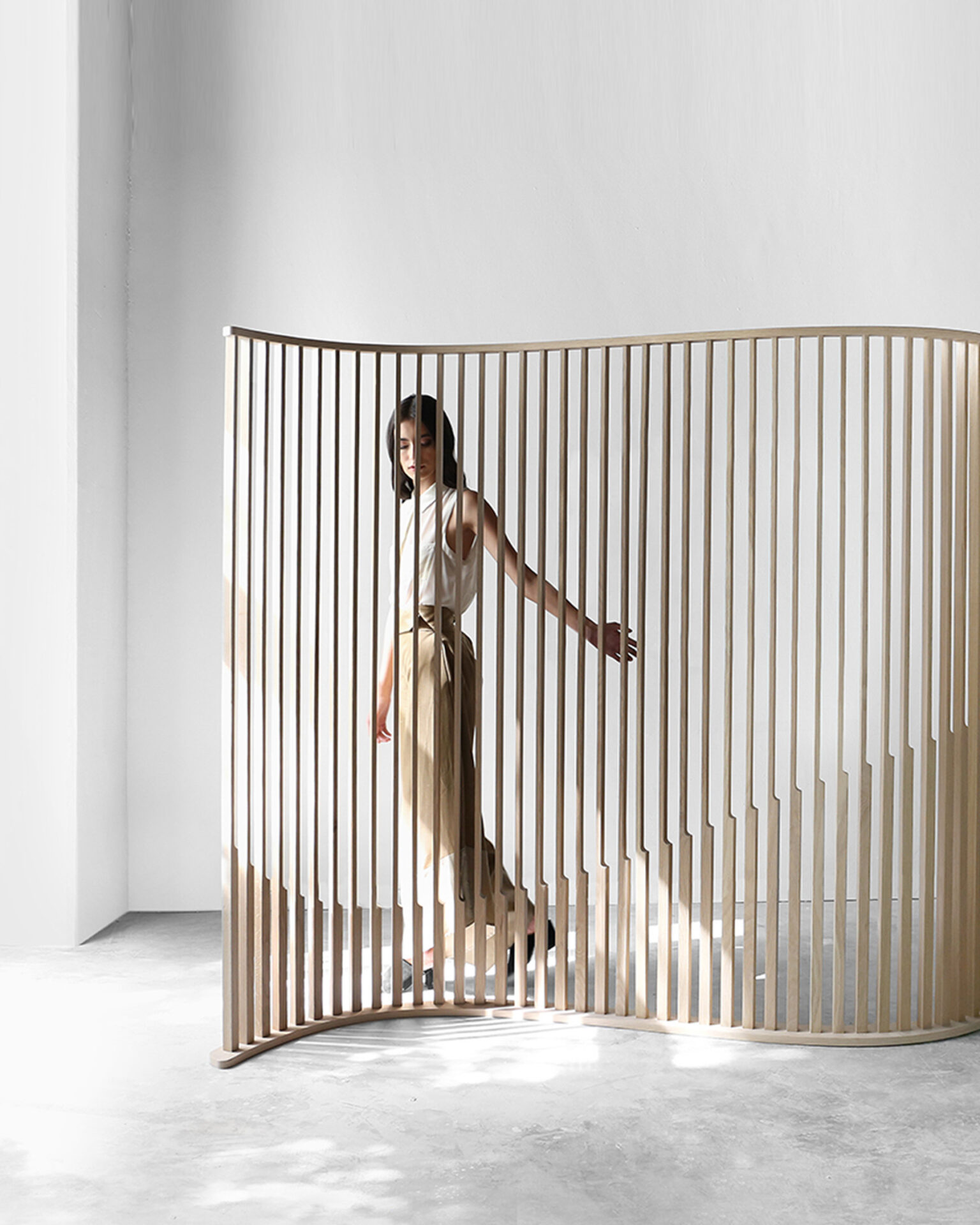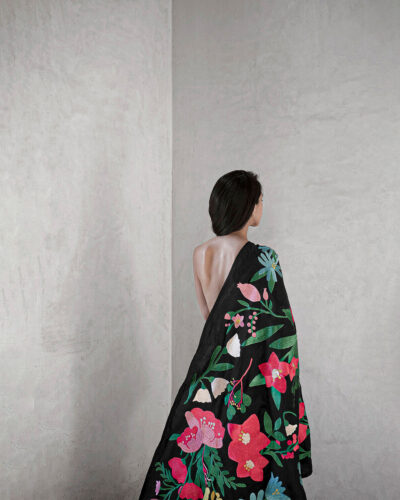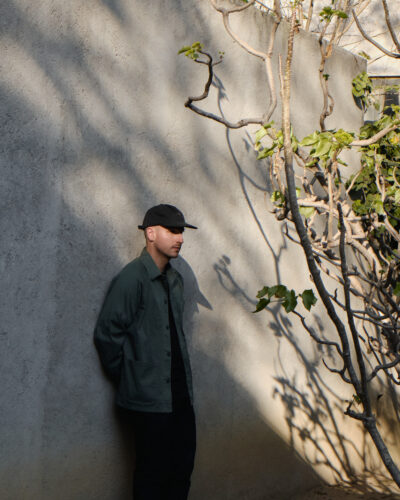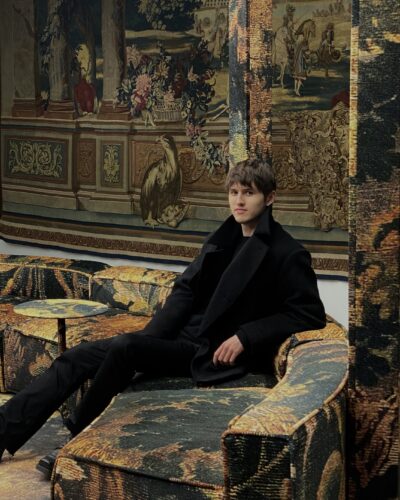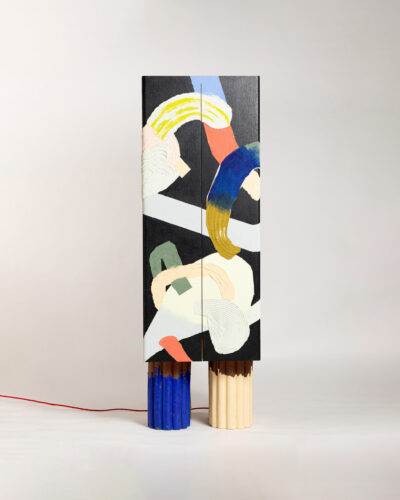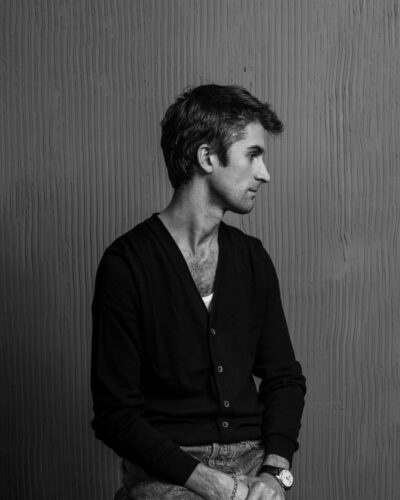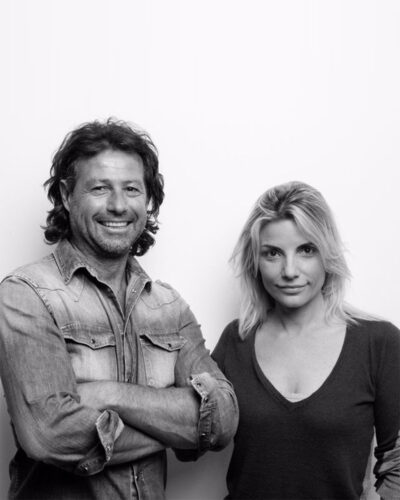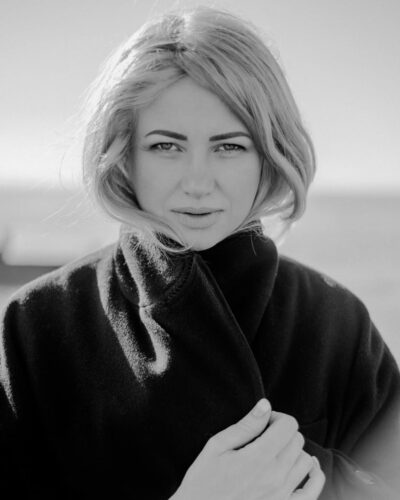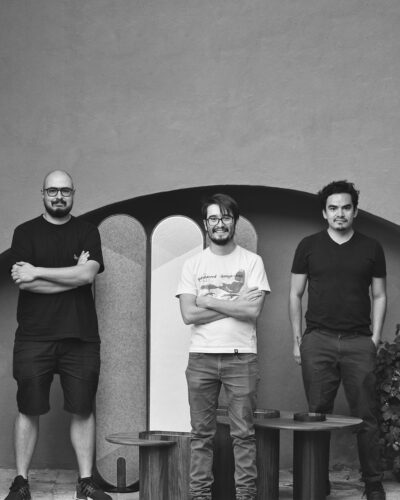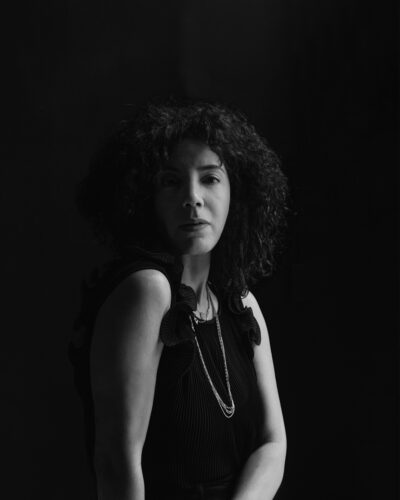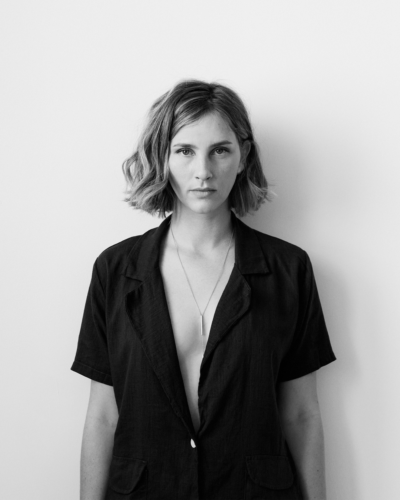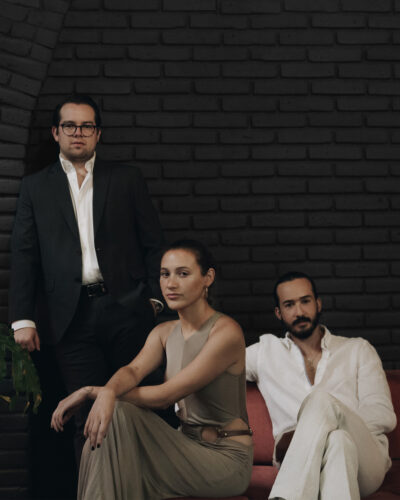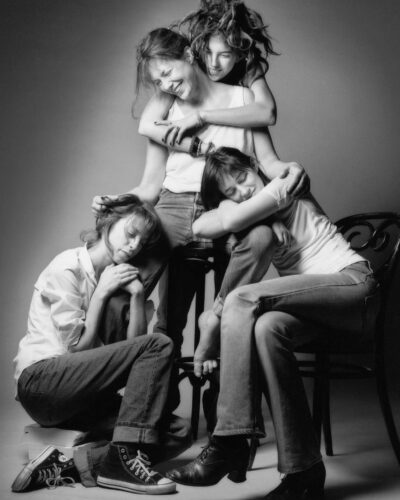This website uses cookies so that we can provide you with the best user experience possible. Cookie information is stored in your browser and performs functions such as recognising you when you return to our website and helping our team to understand which sections of the website you find most interesting and useful.
Listen to the conversation between Rosanna and Joel Escalona.
“Right now, I’m trying to make my way as an artist – a designer-slash-artist. I am trying to put the design process into the artwork to see what happens,” states Joel Escalona, speaking from his home office in Mexico City. “In a way, I was meant to be a sculptor, but I just got distracted with making furniture”.
Escalona’s designs across furniture, textiles, objets d’art and jewellery benefit from his innate sculptural sensibility. His furniture possesses an evocative beauty and a meaningful relationship to its environment, often breaking out of the confines of traditional furniture design. Escalona plays with curves and orientation, creating a sense of movement and an invitation to the viewer to observe from all angles – just as you would with an artwork.
Motivated and energised by the creative process itself, Escalona has many outlets for his creativity, both in his design practice and in his work as a professor of Design in two of Mexico City’s universities. “It’s part of my creative process – my working process – not to do only one thing, but to try to make as many things as I can. If I’m making a piece of furniture I try to iterate it as many times as I can – and sometimes there are pieces I would really like to explore more [outside of] the project – and so I’ll go back, looking at all of the iterations, and then I’ll [continue to work] on those pieces without a brief, a client or a deadline.”
The culmination of Escalona’s commercial and personal projects, the Balance series combines his artistic inclinations and his professional expertise. “I wanted to make something that nobody had asked me for. I had been working with a lot of companies and with a lot of different materials, and [at that point] I just wanted to make something that was just for me. I was trying to put my own personal situation into a single piece of design – trying to find an equilibrium, a balance, between my personal life, working life, teaching classes, the ideas I had, the commercial projects, the art projects. For me, [the Balance series] is a way to represent all of those ideas.”
There are 10 iterations of the Balance series, each of which has been made in a collaboration with a specialist, artisan or expert of each material. Shining a spotlight on the possibilities of each material, the design of each ‘Balance’ is more or less daring depending on what the material – glass, silver, marble, obsidian, lava stone, clay – will permit. “At the beginning [of this project] I was trying to speak about myself – but in the end I was speaking about all of the possibilities that designers have in Mexico in order to make objects, because, as you see, we have all these different materials and processes – from the artisanal to the massive, from the cheap to the expensive – and so [the Balance series is] like a catalogue of the possibilities that you can find here in Mexico.”
“I have a lot of respect for the process, the material and the information – and I really like the technology, the machinery and the workshops… In a way, the technical part is as important as the concept – and [as a designer] you have to respect that and use it to boost your ideas. They have to work together.” The Bodega series is the result of this harmony – at the point where pure concept and technical expertise meet.
The perfect geometry of a simple cuboid is complicated – cut through with rounded rectangular shapes that overlap to build density and depth. Like late-afternoon shadows cast upon its surfaces, one senses that these shapes will continue to drift as the day goes by, eventually sliding off the object entirely to follow their own trajectory: an ephemeral moment made solid.
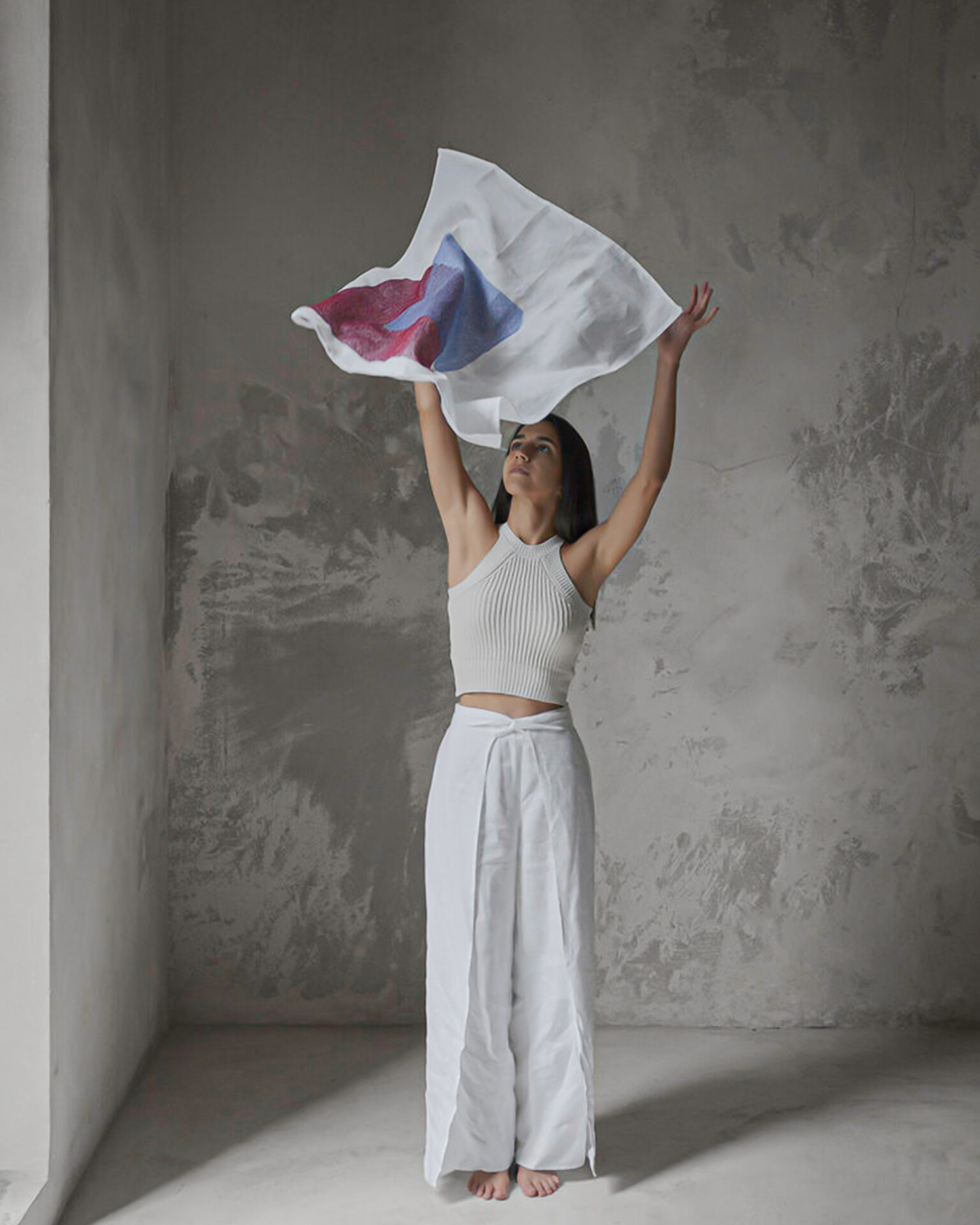
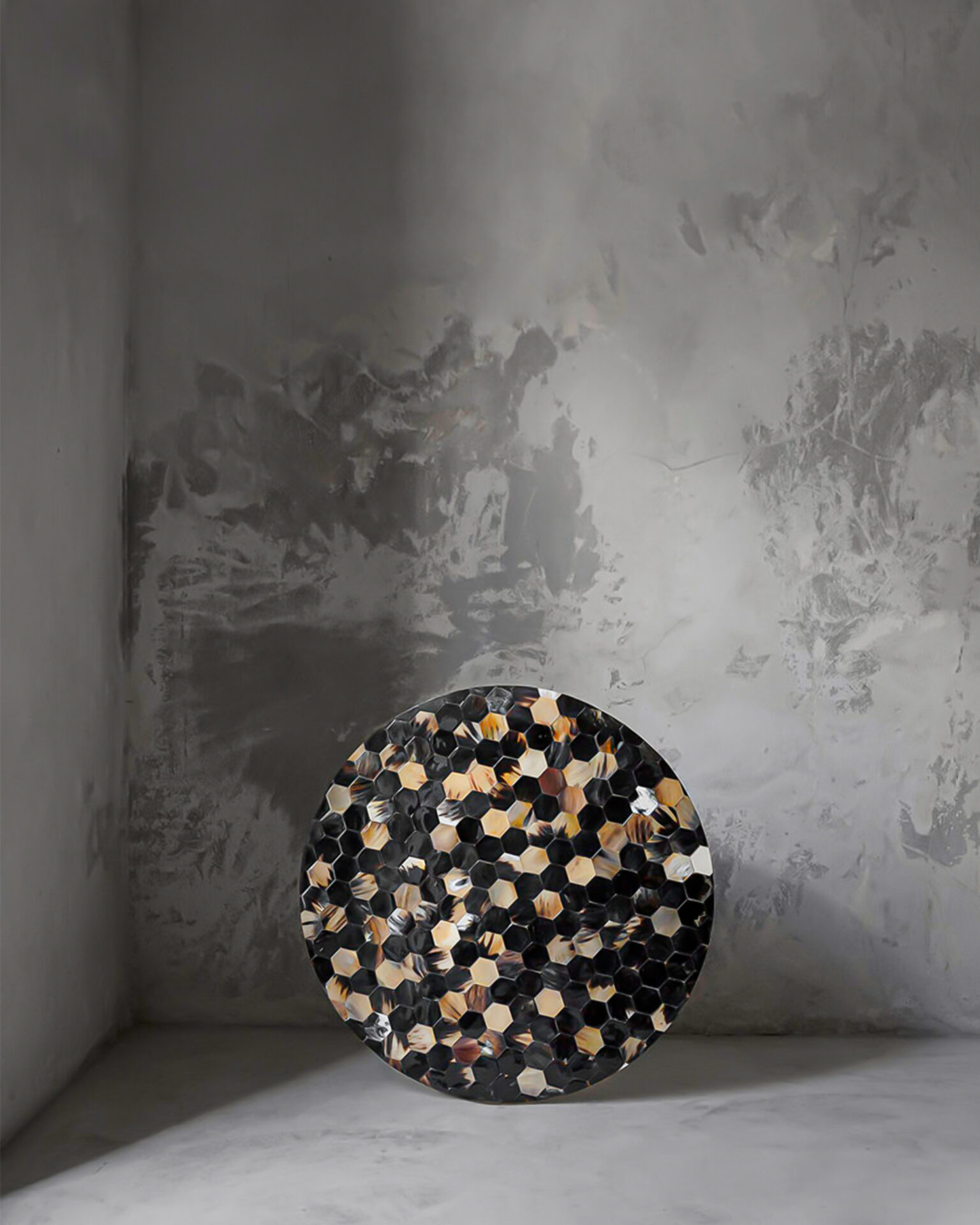
“I really like optical illusions – and the main concept [for the Bodega series focused on] how to make an optical illusion in three dimensions … I like to experiment with how you think you see things, and how they actually are.” Originally imagined in marble, the Bodega’s complex layering of shapes and tones found its final form in wood, which Escalona notes works very well: “Making that transition from darkness to light in just one material is what I wanted. For me, the object comes second – I care more about the concept – but [the Bodega] is a really beautiful object that communicates my concept.”
Bodega Coffee Table
Bodega Credenza
Bodega Cabinet
This same concept – the desire to illustrate chiaroscuro in a physical object – was the starting point for another series: the Booleanos. Whilst Bodega has a sense of levity and playfulness, the Booleanos is a much heavier design, with a greater sense of solidity and mass. Borrowing from the language of architecture, the Booleanos features cantilevered elements that jut out from the overall scheme, disturbing the symmetry and shifting expectations. Wooden blocks, stacked like railway sleepers, graduate from dark to light as they are piled one atop the other. A more sombre version of the same illusion, The Booleanos is an elementary design – though, as Escalona notes, “You can see the resemblance [with the Bodega series] – in a way, it’s the same concept in different shapes.”
Starting life as an idea, Escalona relies on drawing as a means to further develop and experiment with a concept. Tending towards the abstract, Escalona uses only thin, singular lines to create volume from flatness. Giving form to an idea, these lines flow together, moving in an orderly fashion, building a sense of texture and movement. Reminiscent of wood grain, these drawings stand alone as works of art, whilst maintaining a strong connection to Escalona’s work as a designer.
Booleanos Dresser
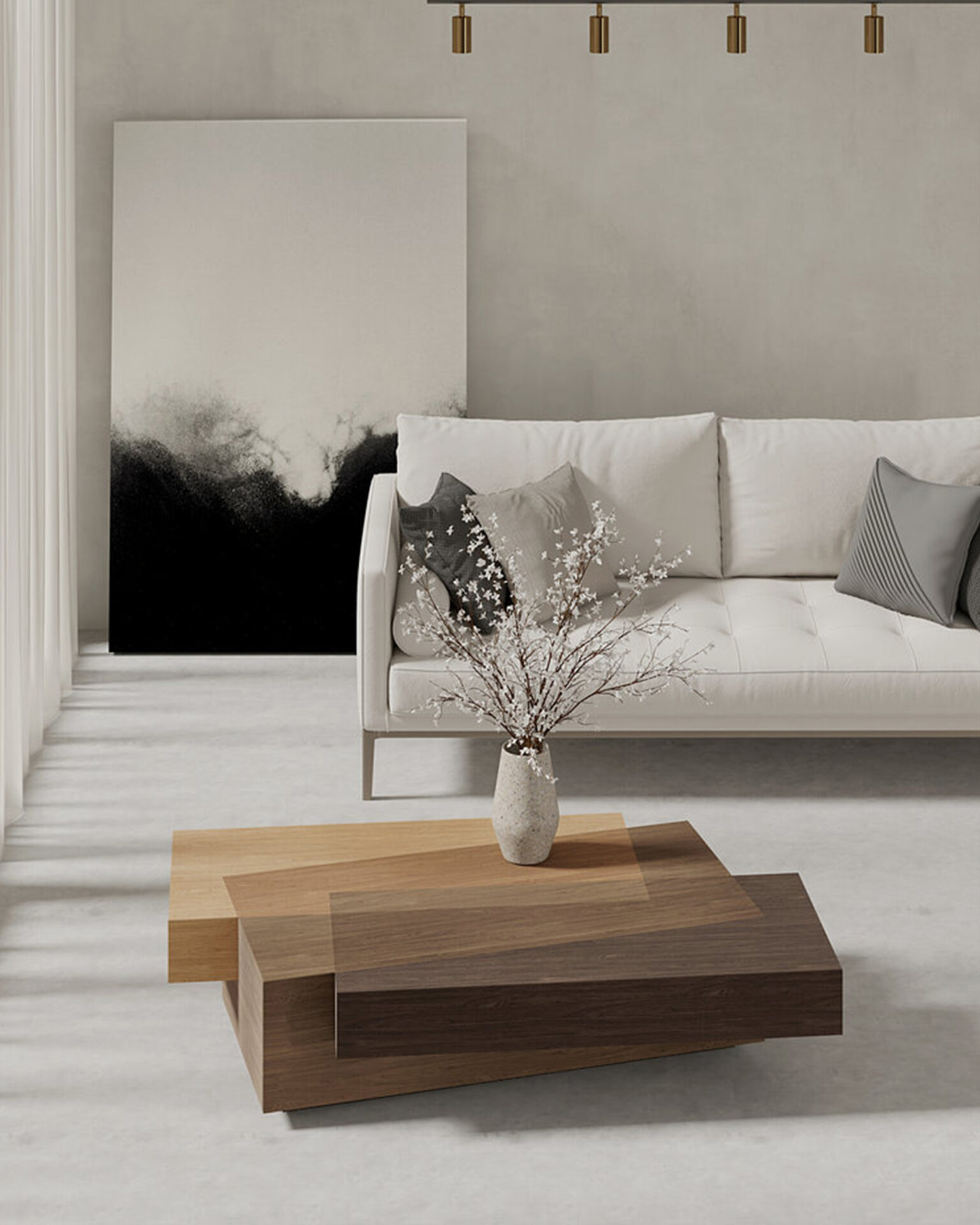
Booleanos Coffee Table
The Noviembre Series is a subtle yet striking body of work that employs natural timber in simplified organic forms; where individual elements come together in pleasing combinations, and the same shapes are repeated at different scales throughout the series. Characterized by generous flat surfaces, slim profiles and rounded pebble-like shapes, Noviembre follows in the tradition of the great modernist sculptors, each piece treading the line between the primal and the sophisticated.
A lightness-of-touch is present throughout Escalona’s creative output – no matter the material, function or scale. He explains that, “For me, it’s not [about finding] the form of the piece -sometimes the most important part is the process or the material – but most of the time is just the concept.”
“I don’t really feel attached to objects – it’s weird because I like to see them and to make them, but I don’t like to have them – it’s a way for me to be free. I just need a pen and paper.” The purity of an idea – a clear and strong concept – is what drives Escalona to create. Keeping only his notebooks – filled with the snippets and fragments of an idea yet to be made – Escalona looks not to visual stimuli for inspiration, instead finding it in the ether, the undercurrent:
“Right now I’m really into art, but not artists per se. I am trying to understand the concepts [that are all around me]. For example, there is a feminist movement in Mexico right now – and the way the people communicate that inspires me – not that I would use that information to put directly into my work – but it’s the excitement and the emotions that people transmit about those subjects that influences the way I think and work, and how I can then transmit those ideas into something.”
Mexico City boasts a vast array of materials and methods of production, and Joel Escalona has the critical eye and singular vision of the artist – and the combination of the two results in objects of great beauty and character which sit comfortably on both sides of the form-function divide. In fact, Escalona notes that often, for him, “the function is just an excuse to make an artwork – the chance to make an idea into something.”
